







































CAIRO
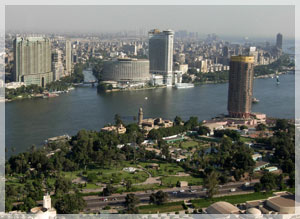 Cairo is a vibrant, exhilarating, exotic, fascinating and welcoming city. Home to the best Pharaonic, Coptic and Islamic sights in Egypt, this city is where you never know what incredible, half-forgotten monument you might stumble across while wandering around. Enjoy the Nile view from your hotel room balcony, visit the capital's medieval markets by Khan El-Khalili, or walk down the Nile promenade. There are also plenty of cinemas, theatres and modern malls. Go for an opera or enjoy oriental music dance shows. Good for short breaks and long stays; you'll get to see the Giza Pyramids, thousands of ancient artifacts in the Egyptian Museum of Antiquities and much more.
Cairo is a vibrant, exhilarating, exotic, fascinating and welcoming city. Home to the best Pharaonic, Coptic and Islamic sights in Egypt, this city is where you never know what incredible, half-forgotten monument you might stumble across while wandering around. Enjoy the Nile view from your hotel room balcony, visit the capital's medieval markets by Khan El-Khalili, or walk down the Nile promenade. There are also plenty of cinemas, theatres and modern malls. Go for an opera or enjoy oriental music dance shows. Good for short breaks and long stays; you'll get to see the Giza Pyramids, thousands of ancient artifacts in the Egyptian Museum of Antiquities and much more.
Moreover, Cairo is for everyone, there are plenty of mid range and budget accommodations to choose from. Pick a charming boutique hotel in the heart of downtown or indulge in utter luxury in one of the city's most luxurious establishments. These usually house professional Spas and wellness centres where you'll be treated like royalty. There are more than 75 four and five-star hotels in Cairo, which all offer stunning views over amazing landmarks such as the majestic Nile, the Pyramids, beautiful parks and gardens, and upscale clubs and compounds.
The weather in Cairo is moderate and low in humidity at almost any time of the year, except for some specific times in summer. Highs of 36°C are common in July and lows of 21°C have been witnessed; the winter months in Cairo, especially January, are much more pleasant with temperatures ranging between 21°C and 15°C. Accommodation by the Nile offers some relief from the summer heat due to the lovely breeze that comes from the river. In March, April, and June the Khamaseen winds blow from the desert bringing with them higher temperatures and sand.

LUXOR
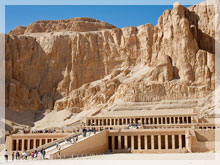 Luxor, once an Ancient Egyptian capital, is known today as the world's "greatest open-air museum." From the tomb of Tutankhamen in the Valley of the Kings and the magnificent sunset views at the majestic temple complexes of Karnak and Luxor to the exciting and fun Nile cruises, Luxor is the perfect choice for culture vultures.
Luxor, once an Ancient Egyptian capital, is known today as the world's "greatest open-air museum." From the tomb of Tutankhamen in the Valley of the Kings and the magnificent sunset views at the majestic temple complexes of Karnak and Luxor to the exciting and fun Nile cruises, Luxor is the perfect choice for culture vultures.
Luxor is divided by the Nile into two areas commonly called the East Bank and West Bank which were considered in Ancient Egyptian times as symbolizing respectively Life and Death.
While the East Bank has grown to become a modern city, it has retained its lush green setting, its traditional bazaar and stunning view of the Nile. The East Bank boasts some of Egypt's most refined hotels, home to amazing Spa's and a golf course.
The West Bank is known for its necropolis and mortuary temples: the Valley of the Kings, the Valley of the Queens, the Workers Village, and the Temple of Medinet Habu are the highlights of Luxor's West Bank. In Ancient Egyptian mythology the setting sun to the west symbolised the journey to the afterlife, so it was fitting symbolism to bury the dead west of the Nile.
While in Luxor, you can opt for a simple accommodation at one of the simple hotel of the West Bank, where archaeologists used to stay when on excavations missions, or you can take it to the other extreme by staying at one of the town's luxurious establishments, such as the El-Moudira Hotel on the West Bank or the history-filled Old Winter Palace on the East Bank.
Sun and warmth all year round characterizes Luxor's climate, the sun shines for 11 hours during summer and 8 during winter. Winter temperature averages around 26°C, in summer temperature reaches 39°C.

ASWAN
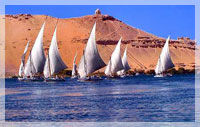 Located about 899 km south from Cairo, Aswan is a serene Nile Valley destination where the Nile is more majestic than anywhere else, flowing through granite rocks, and round emerald islands covered in palm groves and tropical plants. It is considered as an all-time favourite winter destination.
Located about 899 km south from Cairo, Aswan is a serene Nile Valley destination where the Nile is more majestic than anywhere else, flowing through granite rocks, and round emerald islands covered in palm groves and tropical plants. It is considered as an all-time favourite winter destination.
Moreover, you'll be surprised to see how many monuments and sites this small city has to offer. Consider sailing to the temple of Philae, seeing the Agha Khan Mausoleum and taking an excursion to St. Simeon's Monastery.
Egypt's sunniest southern city is the perfect destination to stroll and relax in a magical cultural setting: wander down the broad walkway, locally known as the corniche, to watch feluccas slowly sailing the Nile then stop at one of the floating restaurants to enjoy Nubian music and freshly caught fish. Aswan offers a splendid view of the Nile and is a great starting point for a Nile cruise.
Aswan also offers a rich cultural experience; you'll get to know Nubian culture and shop for spices, henna tattoos, souvenirs and African handmade goods at the Aswan souk. The word Aswan derives in fact from the Ancient Egyptian word "Soun" meaning souk or trade. It has earned its name thanks to the city's strategic position, on the trade route linking the North of Egypt to its South.
Since Ancient times, Aswan has also been known for its environmental therapy: burying the aching parts of your body in Aswan's sand gives valuable results and can help relieving you from stubborn ailments such as rheumatism, arthritis, joint edema and skin inflammation. The town's climate is also known to have great relaxing and rejuvenating properties.
The best times to visit Aswan are May and September, summers are scorching, and winter temperatures have been known to reach 27 during the day, with cold nights.

ABU SIMBEL
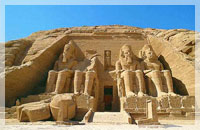 The very small village of Abu-Simbel lies 280 km south of Aswan, and only 40 km north of the Sudanese border.
The very small village of Abu-Simbel lies 280 km south of Aswan, and only 40 km north of the Sudanese border.
Even though it is home to several hotels, the small town is usually overlooked by tourists as a holiday destination. Most of them prefer to visit the Nubian town on a daytrip from Cairo or Aswan or as an extension to a Nile cruise or a Lake Nasser Cruise.
Perched atop a hill overlooking the Nile, the majestic Abu-Simbel Temples are a UNESCO World Heritage Site. Dedicated to Ramses II & Nefertari, the world-famed temples will take your breath away. After a visit to this inspiring site, you can walk around the colourful touristic market, go bird watching on the Lake Nasser, and get back to the temples again in the evening for the amazingly inspiring sound & light show.
Staying in Abu-Simbel for a night or two will allow you to enjoy the peace and magic of this Nubian town at your own pace and discover the true spirit of Abu-Simbel, gaze at the magnificent statues for hours and avoid the hordes of tourists arriving usually in the early morning. You'll also get a glimpse of the hearty Nubian culture by listening to Nubian music, meeting with the locals, and maybe even escaping to the nearby desert for some more inspiring experiences.

ALEXANDRIA
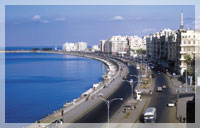 Famous for being called the "Pearl of the Mediterranean," the captivating Alexandria will fascinate you with its mix of history and modernity. Although very little remains of the old city, Alexandria still retains its Mediterranean ambience and old European residence houses, combined with old cafes and Greco Roman monuments. The Catacombs of Kom el-Shouqafa, the underwater ruins of Montazah and Maamoura and the city's vibrant arts scene make Alexandria a great sightseeing destination. Abu al-Abbas al-Mursi Mosque and the Coptic Cathedral of St. Mark are also sights to behold.
Famous for being called the "Pearl of the Mediterranean," the captivating Alexandria will fascinate you with its mix of history and modernity. Although very little remains of the old city, Alexandria still retains its Mediterranean ambience and old European residence houses, combined with old cafes and Greco Roman monuments. The Catacombs of Kom el-Shouqafa, the underwater ruins of Montazah and Maamoura and the city's vibrant arts scene make Alexandria a great sightseeing destination. Abu al-Abbas al-Mursi Mosque and the Coptic Cathedral of St. Mark are also sights to behold.
The beauty and cosmopolitanism of Alexandria inspired great authors such as the British novelist E.M. Forster, the Greek poet Constantine Cavafy who respectively lived in Alexandria in the early and late 19th century, and Lawrence Durrell who lived and wrote about the city during World War II.
The Alexandrian coastline extends on no less than 70 km, from the north-western side of the Nile delta to Mariout Lake in the east. The coast is dotted with beautiful bays and harbours, such as Abu-Qir and the crescent-shaped Alexandrian Eastern Harbour which is overlooked by the majestic Qaitbay Fortress.
The Cornice in Alexandria is a treat during both summer and winter. Starting from Ras El Tin and stretching all the way to Montazah you can enjoy spectacular view of the White Mediterranean. The Cornice was developed in the 1930s and further developments were made to it in the early 1990s. Beaches stretch along the coast from Maamoura in the east and all the way to the Agamy beach west of Alexandria.
If you have time, do not forget to explore the nearby destinations of Borg El-Arab (where the main airport is located) and Abu-Mina. Both are about 50 km away from the city and home to interesting historical sites (St. Mena Monastery, and the Roman Necropolis in Borg El-Arab) and touristic resorts (the Hilton Borg El-Arab, and Golden Beach).
The temperate Mediterranean climate in Alexandria insures cooler summers and warmer winters than in other parts of Egypt. While winters are mostly rainy with temperatures ranging between 10 and 20°C, summers are renowned for the refreshing sea breeze, with temperatures between 22 and 34°C.

SHARM-EL SHIEKH
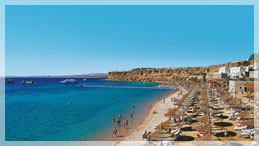 With sunshine and warm waters all year round, Sharm El Sheikh is the closest destination to Europe where you can soak up sun, dive amazing corals reefs, and enjoy the sea any time you need a break from routine. The climate is lovely and dry all year long with temperatures ranging between 20° and 25° C in the winter months, whereas in summer the temperatures go up a little reaching highs of 30 to 35° C.
With sunshine and warm waters all year round, Sharm El Sheikh is the closest destination to Europe where you can soak up sun, dive amazing corals reefs, and enjoy the sea any time you need a break from routine. The climate is lovely and dry all year long with temperatures ranging between 20° and 25° C in the winter months, whereas in summer the temperatures go up a little reaching highs of 30 to 35° C.
Sharm El Sheikh boasts the widest array of fun, exciting and even crazy water and extreme sports: besides diving, snorkeling, sailing, wind and kite-surfing, you can even try sky diving or parachuting from a helicopter on your next holiday in Sharm El Sheikh. Moreover, from Sharm El Sheikh, you can easily book trips and safaris into the nearby Sinai desert and discover the amazing St Catherine Monastery, or the majestic Sinai Mountains.
You can also head to Sharm for a wellness and pampering holiday; the town is home to Egypt's most famous and professional Spas in Egypt.
Add to that endless nights spent at local bars, nightclubs and beaches dancing the night away or the magic of an existing safari into the mountainous Sinai desert landscape and you'll know why Sharm is ranked among the best vacation destinations in the world.
Sharm El Sheikh has it all to make your holiday an unforgettable experience.
Sharm El Sheikh is located on the Gulf of Aqaba, about 300 km from Suez and 19 km from Ras Mohammed National Park.
Inside Sharm, Naama Bay is where the action is to be found whereas the Old Town is where you should head for your daily shopping and souvenirs. If you're in the market for some serenity Hadaba (near Ras Um Sid) would be your choice, here you'll find calm hotels and resorts. To explore the Ras Mohammed National Park and Nabq Protectorate, or to go on diving and snorkelling trips head down to the marina or to one of the town's docking ports.

BAHARIYA OASIS
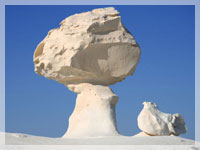 Spanning over 2000 sq. km. the Bahariya Oasis is a lush haven set in the midst of an unforgiving desert and surrounded by black hills made of quartz. The Oasis is home to amazing ruins, such as the Temple of Alexander the Great, beautifully painted Ptolemaic tombs and very old churches. The recent discovery of the golden mummies, the pride of Bawiti Museum today, turned the oasis' main town, into a tourist magnet, and its proximity to the Black Desert have earned Bahariya a high rank on the tourist map of Egypt.
Spanning over 2000 sq. km. the Bahariya Oasis is a lush haven set in the midst of an unforgiving desert and surrounded by black hills made of quartz. The Oasis is home to amazing ruins, such as the Temple of Alexander the Great, beautifully painted Ptolemaic tombs and very old churches. The recent discovery of the golden mummies, the pride of Bawiti Museum today, turned the oasis' main town, into a tourist magnet, and its proximity to the Black Desert have earned Bahariya a high rank on the tourist map of Egypt.
Go for a short hike up to the mountains of Bahariya for an aerial view of the oasis, dunes and great sunsets. Visit ancient Egyptian and Graeco-Roman sites, such as the Tomb of Banentiu, haggle with the locals for a scarf or a rug, enjoy a moment of solitude among wildlife, or relax in the hot waters of the Bir Sigam hot spring. Your options in Bahariya are wider than you can imagine.
People from Arab countries come to the area of the Western Desert in summer for treatment. Temperatures in bahariya can reach up to 35-45 C in summer.

COPTIC EGYPT
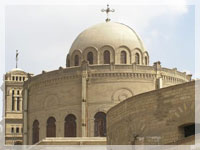 Copts who form the majority of Egyptian Christians are followers of the Coptic Orthodox Church and considered to be part of the descendants of Ancient Egyptians and one of the first peoples to convert to Christianity. In fact, the word "Copt" derives from the Arabic word "Qibt" - or "Gibt" - which derives from the Greek word "Egyptos" meaning "Egypt." The Ancient Egyptian root of the word was "Hikaptah" (Ha-Ka-Ptah), the name Memphis was known by in 3100 BC at the time when it was the first capital of Ancient Egypt.
Copts who form the majority of Egyptian Christians are followers of the Coptic Orthodox Church and considered to be part of the descendants of Ancient Egyptians and one of the first peoples to convert to Christianity. In fact, the word "Copt" derives from the Arabic word "Qibt" - or "Gibt" - which derives from the Greek word "Egyptos" meaning "Egypt." The Ancient Egyptian root of the word was "Hikaptah" (Ha-Ka-Ptah), the name Memphis was known by in 3100 BC at the time when it was the first capital of Ancient Egypt.
The Coptic Church traces its spiritual history back to St. Mark, the traditional author of the Gospel of Mark, and considers him to be the founding father of the Coptic Orthodox Church.
The history of the Coptic Church is tied to the history of Christian monasticism. The ancient tradition of monasticism continues to be practiced in Egypt and offers a great opportunity to visit Coptic monasteries, such as the monastery of St Simeon in Aswan, St Anthony and St Paul Monasteries in the Red Sea mountains, and Deir Al-Kashef Monastery, an early Coptic monastery in the Western Desert. Some of Egypt's churches also rank among the oldest Christian landmarks in the world, such as the church of the virgin in Asyut and the Coptic Cathedral of St. Mark in Alexandria.
Several churches and monasteries also mark the Holy Family Journey trail as described in the Bible. Take an angle's advice and "Arise, and take the young child and his mother, and flee into Egypt."

DAHAB
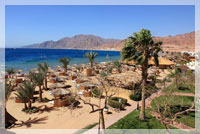 Of all the Red Sea destinations, Dahab is probably the most appealing for those who want to soak up some sun in pristine beaches, relax in laid back atmosphere and try local restaurants. There are also plenty of cozy local stores to go shopping The beaches are public and the coral reefs are a few flipper strokes away from the shore. From the coast of Dahab, you can see the incredible spectacle of Sinai mountains dropping right into the sea. It is located 90 km away from Sharm El Sheikh and 87 km away from Nuweiba.
Of all the Red Sea destinations, Dahab is probably the most appealing for those who want to soak up some sun in pristine beaches, relax in laid back atmosphere and try local restaurants. There are also plenty of cozy local stores to go shopping The beaches are public and the coral reefs are a few flipper strokes away from the shore. From the coast of Dahab, you can see the incredible spectacle of Sinai mountains dropping right into the sea. It is located 90 km away from Sharm El Sheikh and 87 km away from Nuweiba.
Dahab, meaning "gold" in Arabic, was originally a Bedouin fishing village. Today, it is a world-renowned windsurfing destination because of the reliable winds that provide outstanding surfing conditions, especially in the Lagoon area. Dahab is also a great starting point for a Sinai desert safari.
Coastal reefs and the flourishing underwater fauna make scuba diving and snorkelling also extremely popular in the area. The Blue Hole, the Canyon and Fish Bowl, the Caves and the Lighthouse Reef are only a few of Dahab's world-famous diving sites. You can find low cost housing, 4 and 5 star accommodations, and camping sites in the desert surrounding Dahab.
Dahab's Climate makes visiting any time of the year pleasant, temperatures range between 20 and 30°C and the water temperature averages 27°C in summer and 21°C in winter.

NILE RIVER
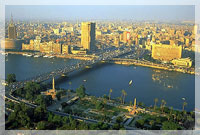 Sailing the Nile along the lush Nile Valley surrounded by golden dunes and sightseeing Ancient Egyptian monuments such as Kom Ombo and Abu Simbel is tourism at its best. Wake to the soft light of the morning sun, take in the heat and cool off in the pool on the deck of a cruiser; watch fishermen cast their nets, farmers take to their fields, a flight of birds, and water buffalos staring back at you. Book a Nile cruise and you just might unravel another layer of the mystery that is Ancient Egypt.
Sailing the Nile along the lush Nile Valley surrounded by golden dunes and sightseeing Ancient Egyptian monuments such as Kom Ombo and Abu Simbel is tourism at its best. Wake to the soft light of the morning sun, take in the heat and cool off in the pool on the deck of a cruiser; watch fishermen cast their nets, farmers take to their fields, a flight of birds, and water buffalos staring back at you. Book a Nile cruise and you just might unravel another layer of the mystery that is Ancient Egypt.
For a softer but still very inspiring cruise experience in Egypt, try the short felucca cruises on the Nile, in Aswan, Luxor or Cairo, or take it to the next level and enjoy an unforgettable night aboard one of the luxurious dinner cruises available in the Egyptian capital.

SAINT CATHERINE MONESTRY
 Saint Catherine's Monastery commonly known as Santa Katarina lies on the Sinai Peninsula, at the mouth of a gorge at the foot of Mount Sinai in the city of Saint Catherine in Egypt's South Sinai Governorate.
Saint Catherine's Monastery commonly known as Santa Katarina lies on the Sinai Peninsula, at the mouth of a gorge at the foot of Mount Sinai in the city of Saint Catherine in Egypt's South Sinai Governorate.
The monastery is Orthodox and is a UNESCO World Heritage Site. Built between 548 and 565,[1] UNESCO report 60100 ha / Ref: 954 states this monastery is one of the oldest working Christian monasteries in the world together with the Monastery of Saint Anthony, situated across the Red Sea in the desert south of Cairo, which also lays claim to that title.
In the area around the monastery, a small town has grown, with hotels and swimming pools, called Saint Katherine City.

MOUNT SINAI
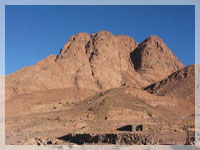 Mount Sinai "Moses' Mountain" or "Mount Moses"; also known as Mount Horeb, is a mountain in the Sinai Peninsula of Egypt that is the traditional and most accepted identification of the Biblical Mount Sinai.
Mount Sinai "Moses' Mountain" or "Mount Moses"; also known as Mount Horeb, is a mountain in the Sinai Peninsula of Egypt that is the traditional and most accepted identification of the Biblical Mount Sinai.
The latter is mentioned many times in the Book of Exodus in the Torah, the Bible and the Quran. According to Jewish, Christian the biblical Mount Sinai was the place where Moses received the Ten Commandments.
